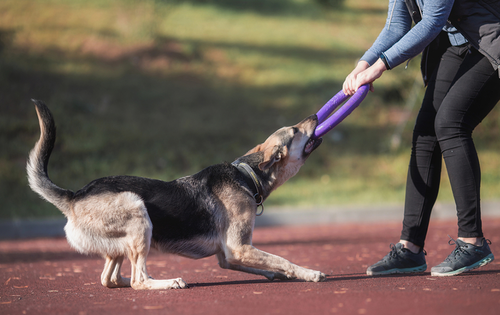Dogs have a range of genetic behaviors that can form the foundation of a strong, respectful relationship between dog and owner when understood and guided correctly. Training is not about curbing a dog’s instincts but rather channeling them into appropriate and safe behaviors in the human world they live in.
The right training can help dogs learn how to behave in various situations, respond to their owners, and even prevent behavior that could be dangerous or destructive. It’s not just about the dog; it’s also about owners learning how to communicate effectively with their pets. Understanding genetic behaviors is the first step toward a happy, well-adjusted dog and a happy owner.
Benefits of Obedience Training
Engaging in obedience training for dogs offers many benefits beyond having a pet that listens to commands. This training can significantly enhance the bond between you and your dog, creating a deeper mutual understanding and respect. Well-trained dogs are often more comfortable and less anxious in social situations, as they understand what is expected of them and how to respond to various stimuli.
Training also provides mental stimulation for your dog, which is as essential as physical exercise. It challenges them to think, learn, and problem-solve, leading to a more content and well-behaved pet. Furthermore, obedience training is crucial for safety; a dog that responds to recall commands, for instance, is less likely to run into a dangerous situation.
For owners, the benefits are equally rewarding. Training sessions are opportunities for hands-on learning about your dog’s behavior and how to guide it positively. It can also significantly reduce the stress of pet ownership as you gain confidence in your dog’s ability to behave appropriately.
Positive Reinforcement Techniques
Positive reinforcement is a powerful method in obedience training for dogs. This approach focuses on rewarding good behavior rather than punishing the bad, creating a positive learning environment for the dog. The technique relies on the simple principle that behaviors followed by pleasant rewards are more likely to be repeated by the dog in the future.
One effective form of positive reinforcement is the use of treats. When a dog follows a command or behaves as desired, giving them a treat immediately afterward helps them connect their behavior and the reward. It’s important to give the treat immediately so the dog understands exactly what action is being rewarded.
Verbal praise and physical affection are also strong tools for positive reinforcement. Dogs often seek approval from their owners and can interpret a happy tone of voice or a pat on the head as a reward. These positive responses encourage the dog to repeat the behavior that earned them.
Toys and playtime can be used as rewards as well. If a dog completes a training session successfully, engaging in a favorite game afterward can be a great incentive. This rewards the dog and strengthens the bond between the dog and the owner.
Consistency is key when using positive reinforcement techniques. Rewards must be given every time the correct behavior is performed to reinforce the learning effectively. Over time, the frequency of rewards can be reduced as the behavior becomes more ingrained.
Addressing Specific Genetic Behaviors
In obedience training for dogs, it’s crucial to recognize and address specific genetic behaviors that can influence how a dog learns and reacts. For example, a herding breed may be instinctive to chase and gather moving objects, while a guard dog breed might be more prone to barking and territorial behavior. Training that acknowledges these instincts and guides them appropriately can be very effective.
For instance, when working with a herding dog, you can use games that mimic gathering behaviors as a part of training. This provides an outlet for their instincts and keeps them engaged and motivated. For guard dogs, training sessions can focus on managing their protective instincts, teaching them commands that reinforce calmness and control.
Understanding and addressing these behaviors requires patience and a tailored approach. The goal is to work with the dog’s natural tendencies, not against them. Doing so builds on the dog’s strengths, making the obedience training process more enjoyable and effective for both the dog and the trainer.
Unleash Potential with CTO Dog Training Services
Embark on a transformation journey and unleash your dog’s full potential with CTO Dog Training’s Services. Our professional dog trainers specialize in tailoring programs that cater to your dog’s unique needs, from mastering basic obedience to comprehensive behavior modification. At CTO, every dog can become a well-mannered companion with the right guidance and training. Turn around your dog’s behavior quickly. Visit us at CTO Dog Training Services and take the first step towards a harmonious relationship with your canine friend. Call us today, and let’s start this rewarding adventure together!

